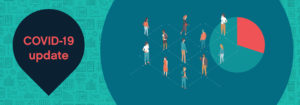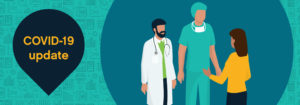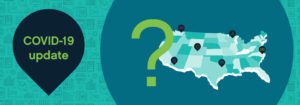The healthcare industry has been in a constant state of flux. From the rise in connected health devices to the transition from fee-for-service to value-based care. The solution to understanding and achieving these rising trends is through big data and analytics. Our predictive analytics scientist, Virginia Long recently contributed to and was featured in two leading healthcare IT publications about the potential of big data and analytics.
Within the Becker’s Health IT & CIO piece, Virginia offered best practices that healthcare organizations can follow to make the most of their resources. Here are a few key takeaways:
“To ensure a successful transition and properly address roadblocks, healthcare organizations must establish a defined data repository and platform to properly store, view and manipulate information. Once the proper platforms are in place, mechanisms and tools need to be utilized, like analytics, to benchmark and track organizational progress. Although costly and time consuming, this is the building block that is fundamental to creating a data-driven approach to healthcare.”
The Healthcare IT News piece, penned by Mike Miliard, took the concept of analytics a step further by highlighting the insights derived from analytics to identify gaps in care, social determinants, etc. Here are a few key takeaways from his piece:
“One of Long’s current focuses is on using geospatial information to find gaps in access to care. For instance, she examined childhood obesity in Mississippi, mapping where there were rural health clinical by county, even by ZIP code. And one ZIP code had a tremendously high rate.
‘You can imagine that if you took that information and added a clinic or state program there it would be super valuable,’ Long explained. ‘You might be able to make some big changes with just a small addition.’
Another of Long’s recent focuses at MedeAnalytics is the addition of geospatial information to help add ‘another layer of understanding to data. ‘Knowing where a person is gives you a lot more relevant information to help you know what’s going on with the patient,’ she said. ‘Not just their health outcomes, but what the drivers are for those health outcomes.’”
To learn more, check out the entire articles at Becker’s Health IT & CIO Review piece and Healthcare IT News piece.
Get our take on industry trends
Avoid COVID-19 modeling pitfalls by eliminating bias, using good data
COVID-19 models are being used every day to predict the course and short- and long-term impacts of the pandemic. And we’ll be using these COVID-19 models for months to come.
Read on...Population Health Amid the Coronavirus Outbreak
In speaking with many colleagues throughout the provider and payer healthcare community, I’ve found an overwhelming sense of helplessness to the outbreak’s onslaught. This is exacerbated by the constant evolution of reported underlying medical conditions that indicate a higher risk of hospitalization or mortality for a coronavirus patient.
Read on...COVID-19 and the Financial Storm Ahead for Providers
Across the country, healthcare organizations are seeing 40%-80% declines in monthly charges with some of the most profitable services lines only seeing 20% of their normal monthly volumes during the pandemic.
Read on...3 Steps Any Healthcare Organization Can Take to Improve Enterprise Analytics
By Kristin Weir When it comes down to the most basic purpose of why organizations use analytics, it’s simple: they…
Read on...


